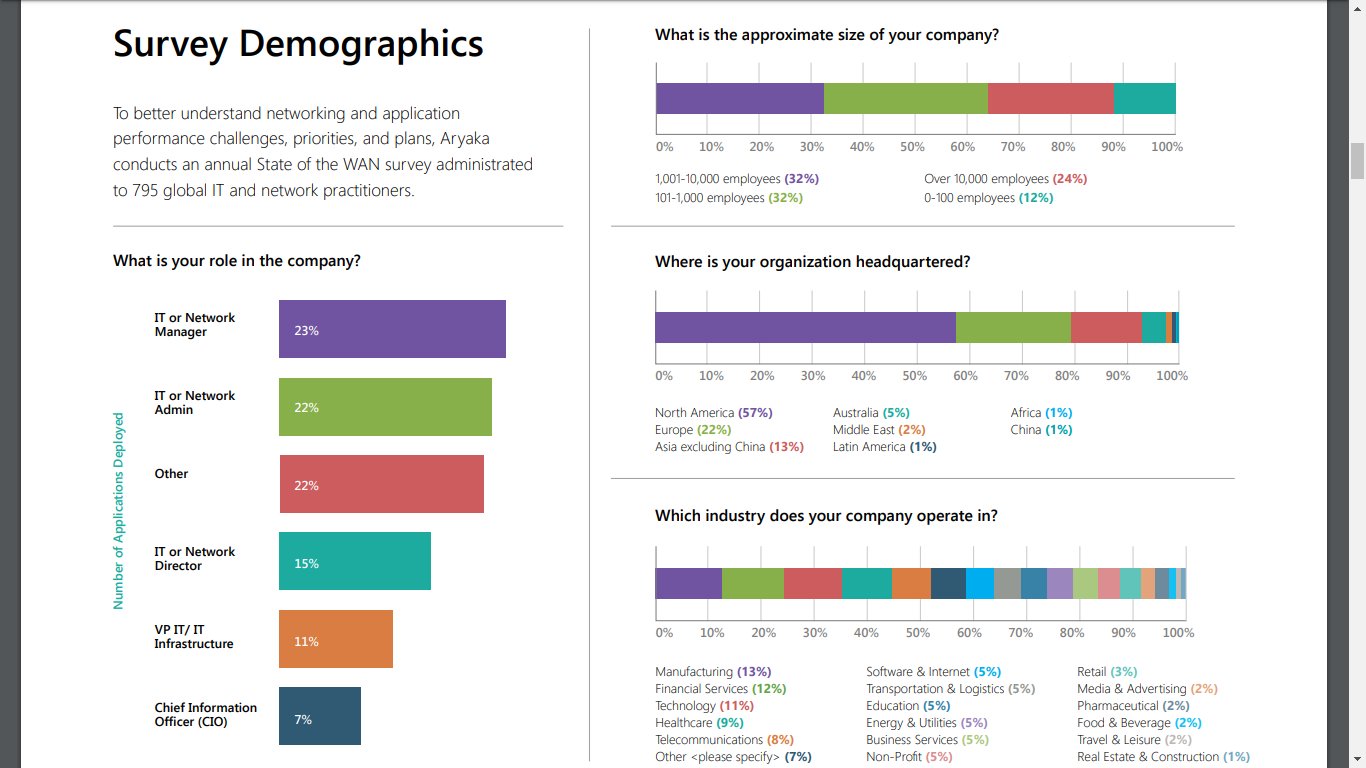Aryaka, an end-to-end managed SD-WAN provider, has published its third annual 2019 State of the WAN report that reveals SD-WAN, cloud and application performance challenges, priorities and plans for 2019 and beyond.
When comparing this year’s results to the 2018 report, a pattern emerges: more respondents identified complexity, even surpassing performance, as the biggest challenge with their WAN. As applications and cloud connectivity become more complex, so do the networks required to support them. Organisations may recognise this, but don’t always have the expertise or resources to deliver on their digital transformation objectives.
“Our research on migration to SD-WAN concurs with Aryaka’s latest survey results regarding the complexities of managing the underlying WANs in enterprise networks,” said Erin Dunne, director of Research Services at Vertical Systems Group. “We are seeing more enterprises choose managed SD-WAN solutions focused on providing dynamic WAN connectivity to ensure optimal end-to-end performance for all types of business-critical applications.”
Study methodology
The third annual Global Aryaka 2019 State of the WAN study surveyed 795 global IT and network practitioners at companies across all verticals primarily headquartered in North America (57%), Europe (20%) and Asia—excluding China—(12%), and with up to 1,000 employees (31%), up to 10,000 employees (32%) and over 10,000 employees (24%). The survey asked respondents about their networking and performance challenges, priorities and their plans for 2019 and beyond.

What follows are a few of the key findings from this year’s report.
Cloud models and new applications are driving Digital Transformation
The majority of surveyed enterprises operate in highly distributed and complex IT environments. Over one-third have 20 or more branches around the globe. Half leverage five or more cloud providers or SaaS applications, and almost 15% have over 1000 applications deployed. These trends impact the enterprise’s ability to properly provision, optimise, troubleshoot, and secure their WAN and multi-cloud environments.
Network and application performance is paramount
With lines of business moving at a much faster pace, the WAN needs to evolve to meet the needs of digital transformation. However, traditional architectures do not effectively enable a multi-cloud approach due to their misalignment with a cloud consumption model predicated on flexibility. This results in cost, complexity and performance challenges. 40% of those surveyed said cost was a challenge for them (7% higher than 2018).
35% said their challenge was around the high complexity, manageability and maintenance (14% higher than 2018). And 24% said they had concerns around slow access to cloud services and SaaS applications (a 3% decrease from 2018). With the limited visibility available, enterprises are split on the source of their application challenges, with 19% stating the branch, 23% the middle-mile, and 24% the application origin.
Unified Communications-as-a-Service (UCaaS) challenges
One common complaint is UCaaS performance across traditional WANs due to latency and packet loss. Challenges include poor quality at 41% (an 11% drop from 2018), lag and delay at 31% (12% higher than 2018), and management at 28% (18% higher than 2018). Clearly, management is becoming a greater concern.
Innovation drives a better experience
Traditional carriers and do-it-yourself (DIY) deployments are not equipped to handle the agility required for digital transformation. Solving slow application performance and managing vendors are the top time-sucks for IT organisations. 45% of respondents said slow application performance is leading to poor user experience in branch offices. 36% said slow application performance is leading to poor user experience for remote and mobile users (9% higher than 2018). And 28% said managing telcos or service providers is a nightmare (12% higher than 2018).

Managed SD-WAN is the future
As organisations plan to the future, their top IT priorities are advanced security (34%), cloud migration (31%), IT automation (28%), and big data and analytics (28%). Yet traditional WAN and DIY SD-WAN solutions can’t always support these initiatives, and based on the growing number of respondents who have issues with managing their telcos, the situation is only getting worse.
A fully managed global SD-WAN solution promises to provide flexibility, visibility, enhanced performance and the cost control required in a cloud-first era. And, the characteristics that enterprises look for in any SD-WAN solution closely track their overall IT priorities – 47% are looking for cloud and SaaS connectivity, 43% advanced security, 37% WAN optimisation and application acceleration, and 34% are looking to replace their MPLS network.
“We are living in a complex multi-cloud and multi-SaaS application world. As global enterprises continue to innovate by embracing new technologies and migrating to the cloud, they also face new challenges,” said Shashi Kiran, CMO of Aryaka. “Whether it’s an increasing number of global sites through expansion, poor performing cloud-based applications, increasing costs or the time it takes to manage multiple vendors, many organisations are at an inflection point: transform the WAN now or risk falling behind and losing out to competitors.”
Comment on this article below or via Twitter: @VanillaPlus OR @jcvplus






